After passing the Brooks Peninsula on June 30, July has brought very weird and challenging weather. It doesn’t feel like summer, and we’ve gone many days not even seeing the sun, because it’s obscured behind a heavy cloud layer. We’ve had rain about half the days; normally in Seattle we count on summer arriving after the 4th of July, but that hasn’t seemed the case on the west coast of Vancouver Island.
The weather varies between chilly to warm and very humid (90% humidity). The humid days are completely overcast, darkening the sky and reducing solar output. It feels like a Hawaiian rainforest, but without the sun. Other times, the temperature has been chillier than we had a month and a half ago, in late May on the Central Coast. We’ve been wearing foulies and fleeces in July, which seems very weird.
BC weather forecasting says there’s a ridge offshore and a quasi-stationary trough over the mainland, but I don’t know if that explains things or not. Someone we met at Nuchatlitz said there’s an inversion going on, which explains things a lot better (we’re quite familiar with inversions in Seattle, but they usually happen in the spring or fall, not summer!). An inversion, as I understand it, means warmer, clearer air is stuck above a dense cloud layer. People at ground level (ie, anyone on a boat) experience dark, chilly conditions, but if you could hike up 5000 feet or so you’d get to nice sunny conditions. It also means little wind – if there were wind, it would blow out the inversion.
The lack of wind has been the most frustrating part. It’s almost like we’re in the doldrums, the ITCZ, or the South Sound in August. Our last 4 days in Kyoquot Sound didn’t have a single hour with wind over 5 knots. And when we “sailed” to Esperanza Inlet on a forecast of NW 5-15, we had to motor pretty much the whole way because there wasn’t more than 4 knots on the ocean the whole day.
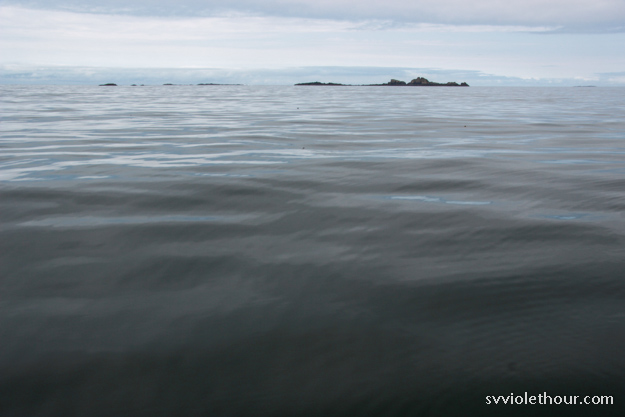
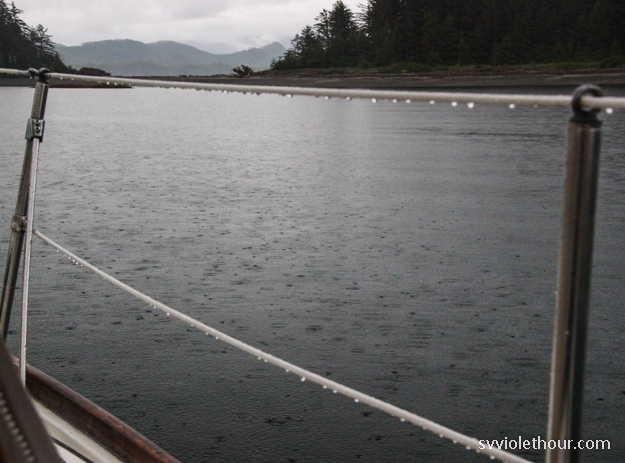
Another rainy rainy day.
[This post covers July 7-12, 2019]
As I’ve written before, wind is our motive power and a sailboat is a lot more fun when we can sail. Perhaps this wouldn’t be so frustrating if it were August – we know not to expect much wind in the lowest wind month of the year (and we try to avoid sailing far then). But July should have fairly consistent northwest wind on the west coast of Van Isle. Historical wind station data indicate that’s more probable than not, and even early June had strong northwest wind here. But this July so far we’ve had only 2 days of moderate northwest wind, and the other 12 days have been either light or southeast.
It does little good to complain – we can’t control the weather. A tough lesson for sailors is that the weather can stay adverse longer than your patience can last. If we were in the trade winds, we could count on the wind usually coming from the east rather than the west, in the northern hemisphere. But this is the Pacific Northwest. The wind can come from any direction, switch as often as it likes, and there are no firm rules to its seasonal patterns – all the rules can be broken.
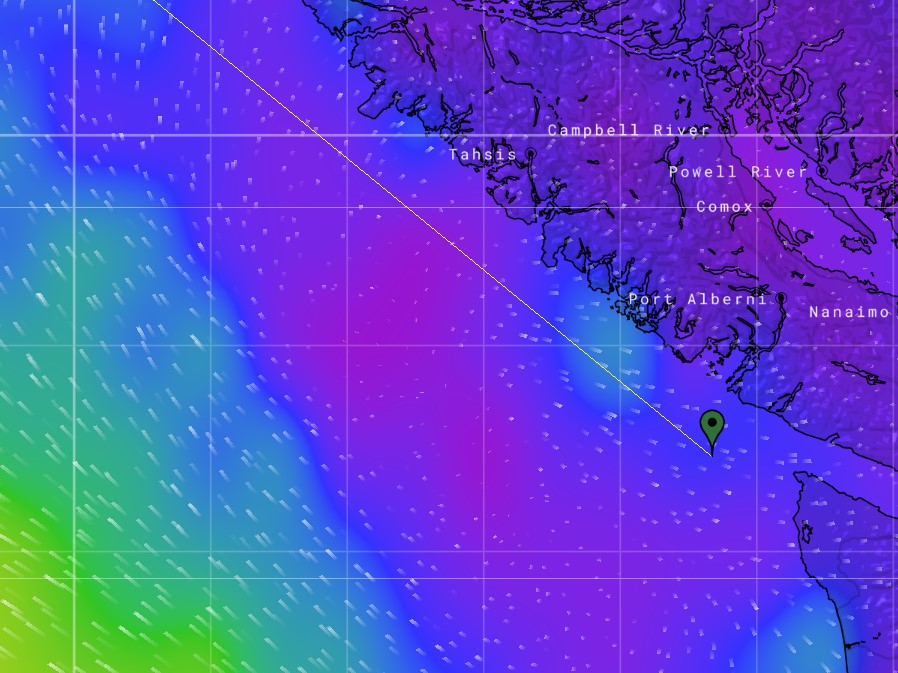
PredictWind ECMWF forecast for Tues July 9 12pm. Huge dead zone along the coast of Vancouver Island.
Rugged Point Cove to Esperanza Inlet
In the morning anchored at Rugged Point, we saw a little bit of wind up – maybe 4-7 knots? – so we raised anchor and headed out to Clear Passage, the inner more protected (from swell) route south. But the wind was only 4-5 and soon faded to 1-3. We dropped our slatting main and sat for an hour or two, reading books, to see if any wind would come along. The swell was still rolling us heavily though. Eventually we got pushed towards the reefs near the beach and turned on the motor for the next 12 miles to Esperanza Inlet. In the inlet we had 6-8 knots of inflow wind so we sailed the remaining 3 miles.

Rugged Point Cove, Kyoquot Sound
The forecast had been for NW 5-15, but outside of the sounds we never had more than 0-5. We’re starting to realize why others who have been around Vancouver Island say you need NW 15-25 or more to sail. Env Canada commonly overestimates the wind level, especially for light wind days. The GRIB models however (ECMWF in PredictWind) had correctly predicted 0-4 for near-shore winds this day.
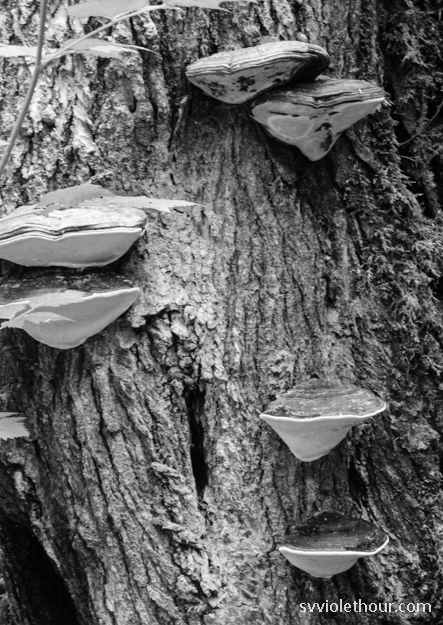
Nuchatlitz anchorage
Nuchatlitz anchorage was very scenic – on a clear day, we could imagine it would have great views. The dense low cloud layer we’ve been having means usually we can’t see the mountains. On the second day here though we did have a taste of what the views could be like when the sun came out for a few hours.
One particularly cool and unusual feature of Nuchatlitz is you can walk across the drying sand bar for about half a mile to an island, only accessible by foot at mid to low tide. We also saw several sea otters in the anchorage, and listened to them smacking rocks against whatever crustacean they had caught.
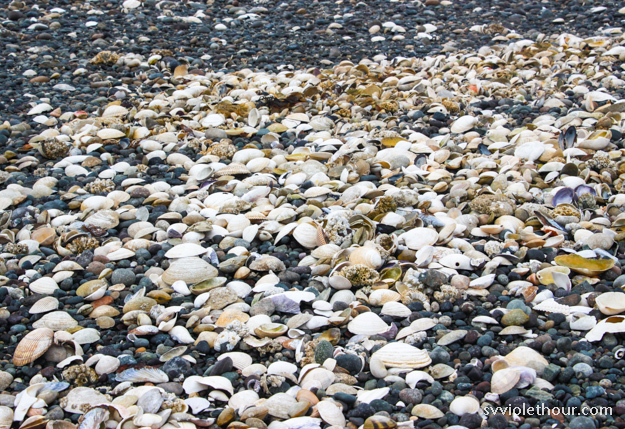
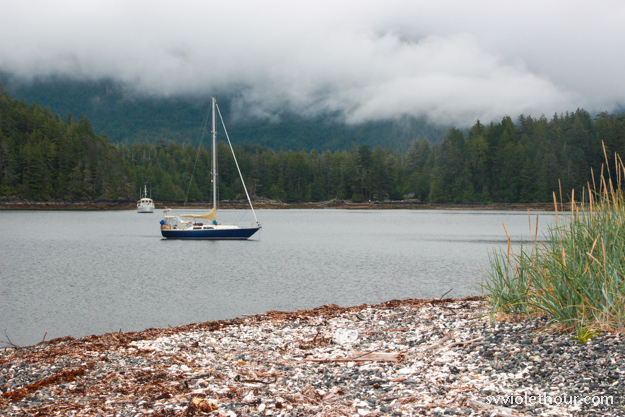
Anchored at Nuchatlitz. A motorboat from Seattle (“Navigator”) joined us the second night.
Weather Phase 2: Southeasterly in July!
After a week of “wind light”, the weather transitioned to something new: a moderately strong southeasterly low pressure front, bringing rain and five to six days of southerly wind. In July! Low pressure fronts bringing southeast gales are common in the early/late season, but to have them in July is something I can’t recall.
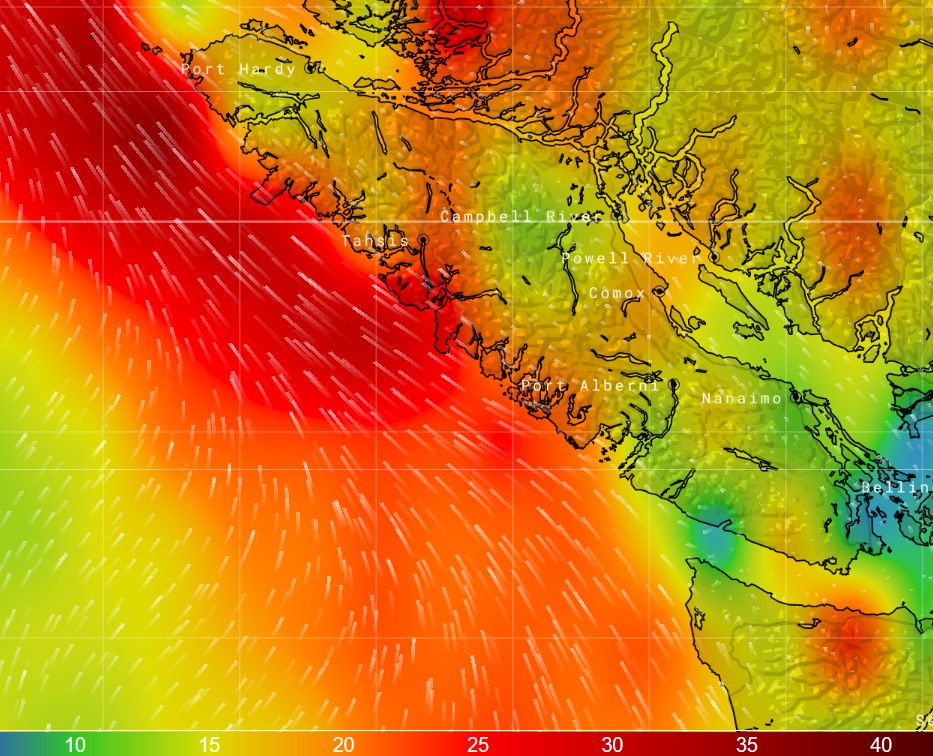
PredictWind ECMWF forecast for Weds July 10 at 10am.
Nuchatlitz to Nootka Sound, Ewin Inlet (Bligh Cove)
We decided to leave Nuchatlitz on the beginning of the southerly rather than the tail end – going on the beginning meant we’d do the ocean part with the seas at 0.7 meters instead of double that, after SE 30 had stirred things up. I was still anxious though because if the SE 30 came early, upwind in that would be no fun. The forecast was: SE 5-15 morning, SE 15-25 afternoon, SE 20-30 evening. BC changed the forecast 3 times though, and we don’t have Internet access for better models now.
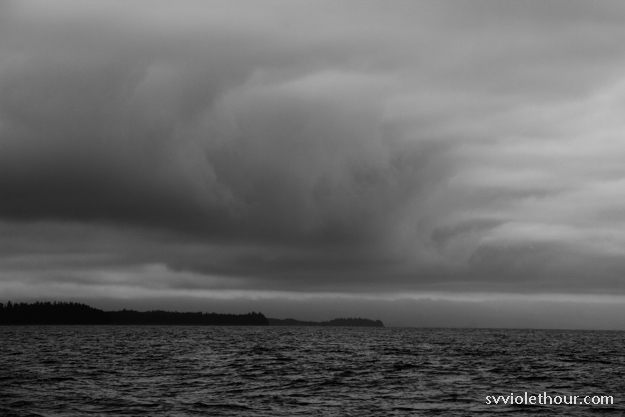
Clouds looking ominous as we sail into a southeasterly approaching Nootka Sound.
It ended up working out great though. We started early (8am) and motored about an hour out of Esperanza Inlet till we got to SE 7-8, and set sail upwind. It took about 4 hours of tacking to make the entrance to Nootka Sound, but we were going 5 knots most of the time (wind built to SE 9-10), on a very gentle swell state, so it wasn’t tedious at all.

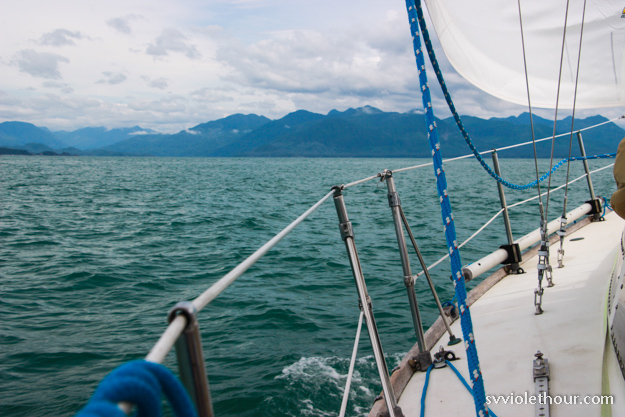
The water sailing into Nootka Sound was a bright teal color. Algae bloom?
On the turn into Nootka we got onto a fast beam reach (the wind pretty much always bends to inflow into Nootka), and then broad reach. Seas were confused in Nootka though (the ebb must’ve still been running) – 3 foot close-spaced chop with only SW 6-7 in wind.
I considered putting up the spinnaker. Good thing we didn’t! Within 20 or 30 minutes the inflow built to 20 knots gusting 22. We started doing 7 knots so we furled the genoa but then were still going 6.7 knots. Our C&C is a great sailing boat but not a modern racer with a flat stern – when we’re overpowered the boat doesn’t surf like a racing sled does, it digs in. We sailed all the way into the anchorage, which was perfectly protected (0 knots gusting 3!).
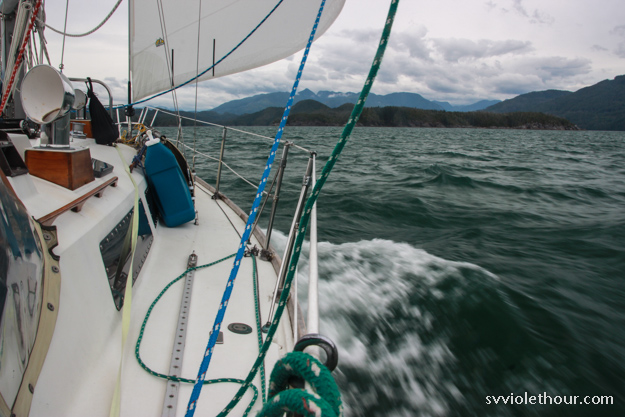
Ewin Inlet, Bligh Cove
I love the sound of rain on deck. A light rain makes a gentle pattering, a moderately heavy rain begins to make a drumming sound, and a torrential downpour sounds as if someone’s drumming on deck. Over the hours, the southeasterly brought rain ranging from light crescendo-ing to a full percussion band playing on deck.
It was a tough, dark day in July though. It felt more like the rain storms we get in November. It was so dark at times during the day that it felt like night-time. We turned on cabin lights to read, and solar output was 90% reduced – our batteries ended the day more depleted than they have all year. The boat interior was at 90%+ humidity and dripping wet – at 90%+, water in the air condensates onto surfaces. So we actually ran our diesel heater (first time we’ve ever done that in July!) to dry things out a bit.
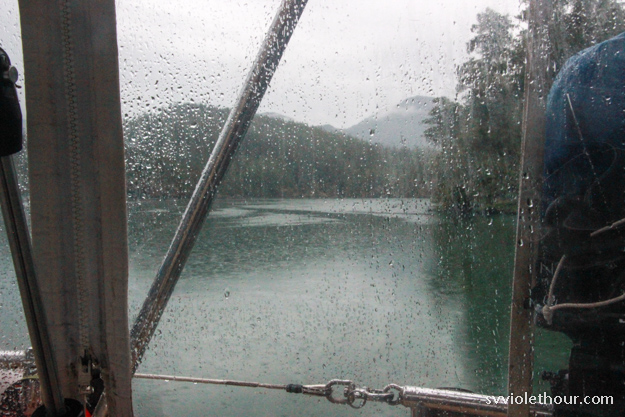
Maybe summer will arrive in August?
Ewin Inlet was an excellent hurricane hole to hide out in – with the forecast of SE 20-30, we never got more than 8 knots in the anchorage. It was one of our favorite anchorages in a while – pristine, beautiful and quiet.

Anchored in Bligh Cove, Ewin Inlet, Nootka Sound.
I took the SUP out when the rain lightened to a drizzle, and was surprised by how much sea life there is in Ewin Inlet. I found vibrantly colorful sea stars, bat stars, red crabs, rock crabs, a herring ball (school of herring tightly packed in formation), spiny sea cucumbers, jumbo oysters (the size of a mango), and fried egg jellyfish.
We spent 3 days in Bligh Cove. On the 3rd day we actually had sun, and it was very much appreciated! The frontal system kept winds southerly for nearly a week though, too long to wait for NW winds. But with lighter south winds (10-20) we could move south without problem, though without the easy downwind sailing.
Coming Up
The next hurdle is rounding Estevan Point. Estevan is known to be ugly in a strong southerly, and can be bouncy even in lighter conditions. The point juts out 10+ nautical miles from Nootka Sound, has current running around it, and makes its own weather at times – bending and shaping the wind. We’ve been around Estevan twice before and it wasn’t too bad, but a long day in somewhat sloppy seas.
We haven’t seen many sailboats since Rugged Point in Kyoquot Sound. We had one sailboat motor past us while we were sailing to Nootka Sound, and spotted one at anchor in Friendly Cove, but that’s only two sailboats in the last 5 days from Nuchatlitz to Nootka. The West Coast in general is very sparsely traveled by cruising boats, even more so than we expected.





